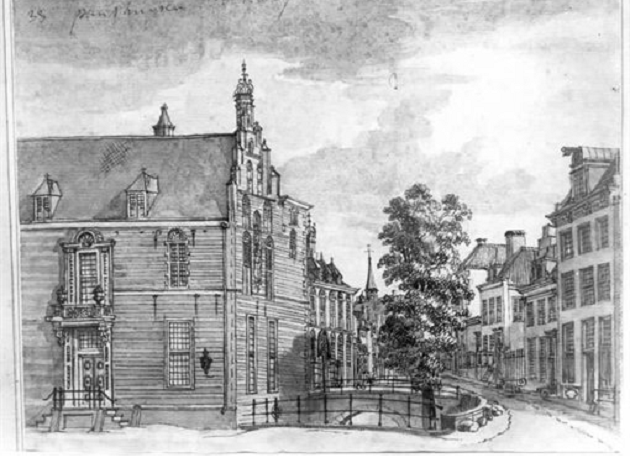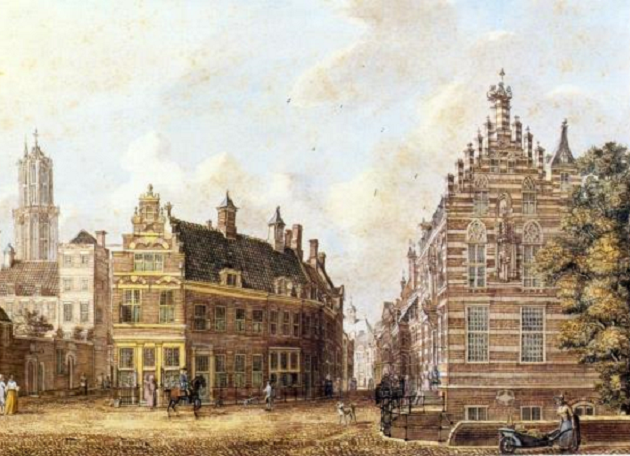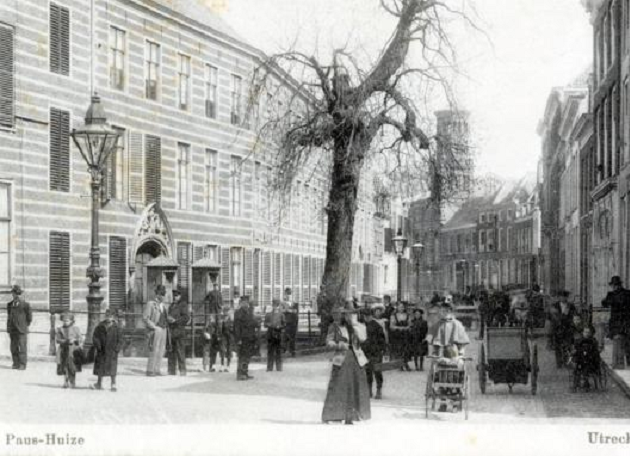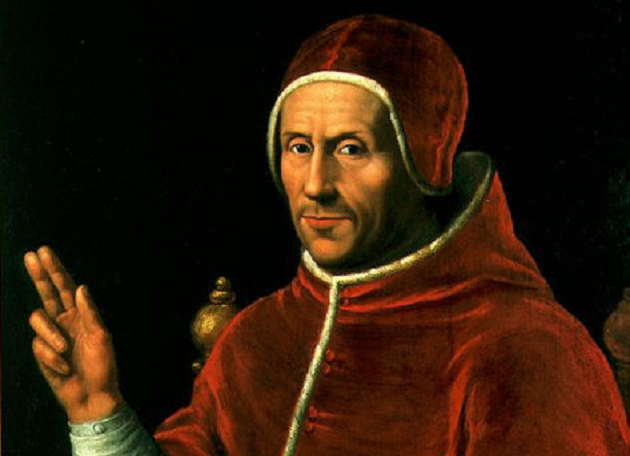The history of Paushuize
Adriaan Floriszoon Boeyens
The second youngest venue of Heirloom, Paushuize, was built over 500 years ago. In 1517, Adrianus of Utrecht commissioned the construction of the city’s largest private residence, on the remains of a former monastery site. At that time he was staying in Spain as the ambassador of Charles of Habsburg, but longed to return to Utrecht, his city of birth. Unfortunately, he never got to live in the house where he wanted to spend his old age. On January 9th, 1522, the cardinals in the Sistine Chapel elected him the new ruler of the Catholic Church. Pope Adrian VI died 20 months later in Rome, where he is also buried.
A remarkable career for a middle-class boy, the son of a ship’s carpenter, who grew up at the Oudegracht in Utrecht. Adrian became a famous theologian in Leuven, the educator and advisor of Emperor Charles V, the stadholder of Spain and finally Pope Adrian VI. He was a friend of Erasmus and collided with Luther. After his death, the citizens of Utrecht honored him as a saint for a short period of time and started calling his residence on the Kromme Nieuwegracht Paushuize (the Pope’s house).

Since then, national and international dignitaries have been coming and going. In 1584, Paushuize became the official residence of the stadholder of Utrecht, Joost de Soete. The next owner was Reynhart van Aeswijn, co-signatory of the Union of Utrecht and fanatical Calvinist. In 1633, Daniel d’Ablaing ordered the construction of the gatehouse and the bridge over the Kromme Nieuwegracht. In the disaster year of 1672, the French occupiers settled in Paushuize, and during the convention that initiated the Vrede van Utrecht in 1712, Count von Sinzendorf, the emissary of the Austrian emperor, moved into the building.

A year later, Paushuize was bought by Hester Ranst, widow of the wealthy Amsterdam Schepen (a Schepen is a public local governor) Jacob Jacobsz. Hinlopen. She expanded the property with the corridor on the garden side and moved the main entrance to the street Achter St. Pieter. Her daughter Sara sold this ‘Grand Paushuize’ to Jan Floris graaf van Nassau La Lecq, who was bailiff of Utrecht for over twenty-five years. The young Belle van Zuylen was a regular guest, as was her admirer, the Scottish writer James Boswell.
Hotel of the queen of Holland
In 1798, Paushuize was publicly auctioned to Willem Gravelaar, a cook and pasty baker, who established the “Logement Groot Paushuizen”, one of the best hotels in the city. In 1807, Queen Hortense, wife of King Louis Napoleon, stayed for one night on her way from Mainz to The Hague.
She allowed the widow Gravelaar to call the hotel the “Hotel of the Queen of Holland”. Shortly afterwards, the new owner, Louis Napoleon, stayed there for almost four weeks while he waited for his palace on the Wittevrouwenstraat, now the University Library, to be completed.

Between 1815 and 1957, the building belonged to the Dutch government. During these years, four governors and eleven commissioners of the King lived in Paushuize. Since 1957, it is owned by the Province of Utrecht. The Commissioner of the King does not live here, but the building does serve as an official residence and as a meeting place during representative receptions and meetings.

The historical significance of the monument was emphasized again when Pope John Paul II visited it in 1985, in honor of his distant predecessor, Adrianus.
Between 2010 and 2011, Paushuize was renovated by the Province of Utrecht, with an emphasis on the sustainability of the building. Since 2012, Heirloom has been in charge of the exploitation. It is now a very popular venues for both business events and weddings.
Contact